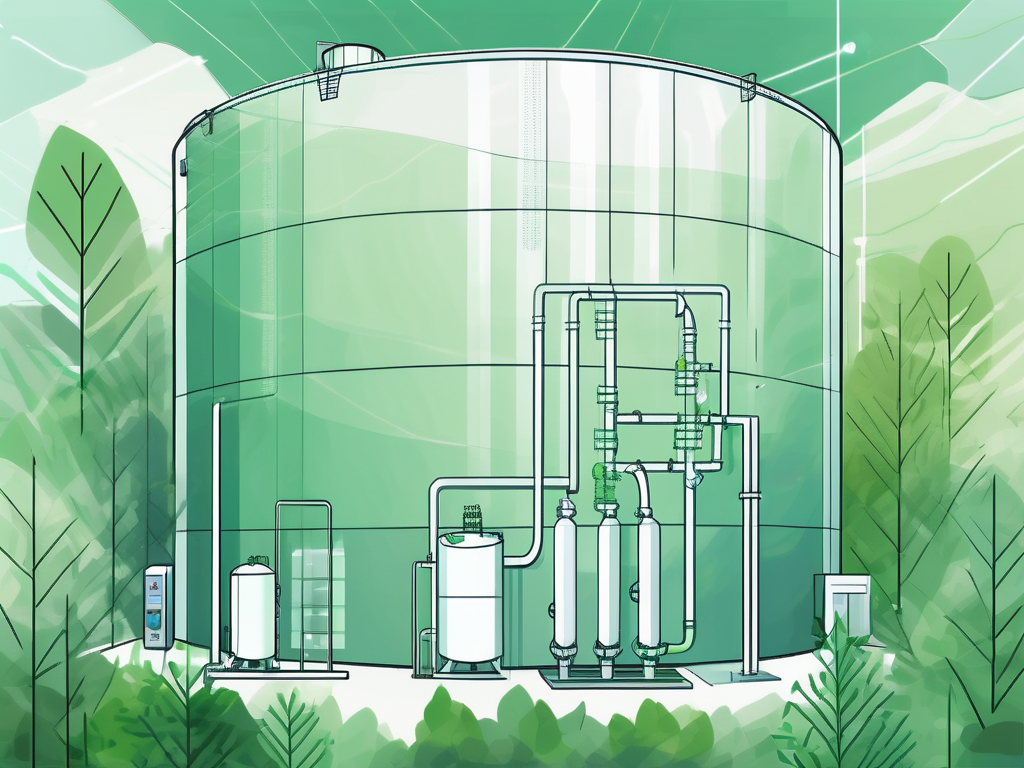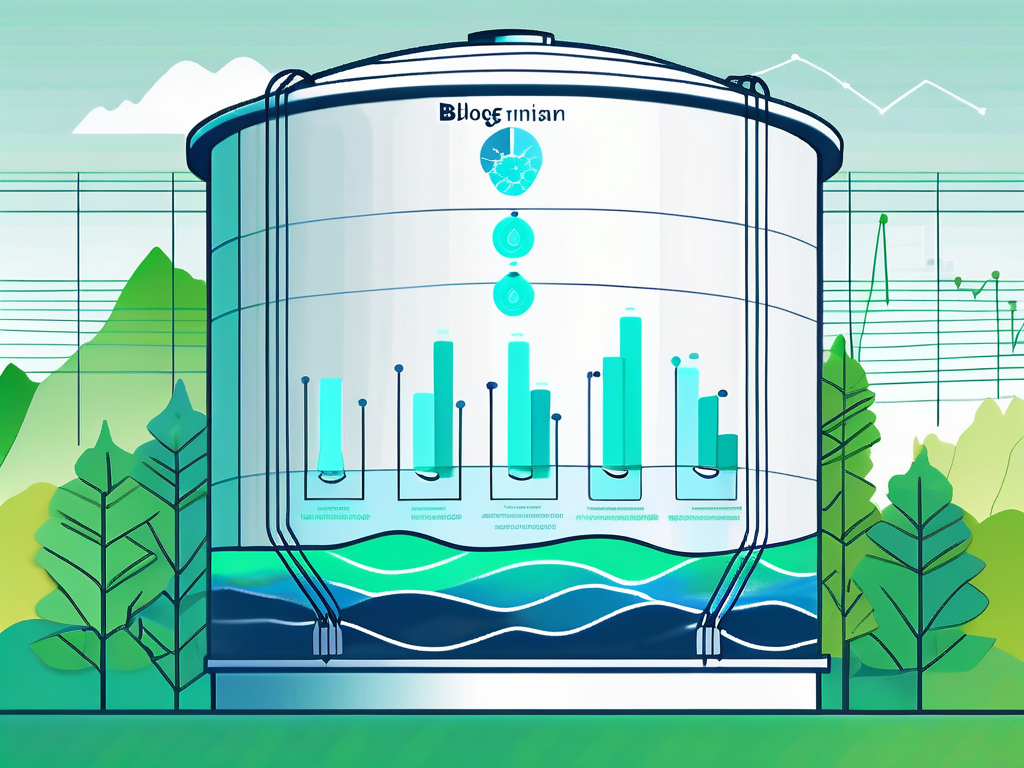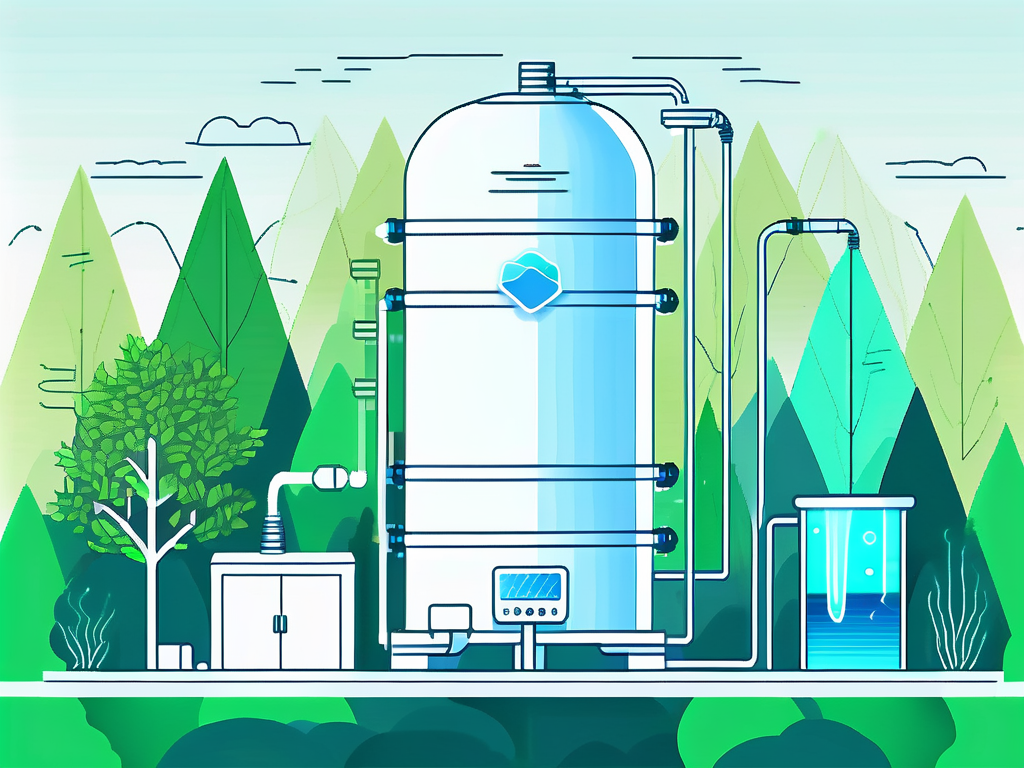
Innovative Water Storage Monitoring System: Enhancing Efficiency and Conservation
Innovative Water Storage Monitoring System: Enhancing Efficiency and Conservation
In an era where water scarcity is becoming an increasingly prevalent crisis, the need for robust water conservation methods cannot be overstated. The advent of innovative technologies provides a promising solution, particularly through the deployment of advanced water storage monitoring systems. These systems are designed not only to improve efficiency in water management but also to foster a culture of conservation among users.
Understanding the Importance of Water Conservation
Water conservation is a crucial practice that entails the careful management of water resources to prevent wastage. It is driven by the necessity to preserve our most vital resource, ensuring that it remains available for future generations. The effects of over-extraction and contamination have led many regions to face severe water shortages, making it essential to adopt sustainable practices. As populations grow and climate change exacerbates weather patterns, the pressure on existing water supplies intensifies, highlighting the urgency of implementing effective conservation strategies. Communities that prioritize water conservation not only safeguard their immediate water needs but also contribute to the health of local ecosystems, which rely on balanced water levels for survival.

Moreover, water conservation plays a key role in reducing energy consumption. A significant amount of energy is expended in the transportation and treatment of water, thus conserving water can lead to lower energy bills and a reduced carbon footprint. The integration of innovative technologies into water management strategies can provide the impetus necessary for larger-scale adoption of conservation methods. For instance, rainwater harvesting systems can capture and store rainwater for later use, reducing reliance on municipal water supplies and decreasing the energy required for water distribution. By embracing such practices, individuals and businesses can not only save money but also contribute to a more sustainable future.
The Role of Technology in Water Conservation
Technology has transformed virtually every aspect of modern life, and water conservation is no exception. Advanced technologies such as smart meters, automated irrigation systems, and sensor-based monitoring tools have revolutionized how we interact with our water resources. These technologies facilitate real-time data collection and analysis, enabling users to make informed decisions about water usage. For example, smart irrigation systems can adjust watering schedules based on weather forecasts, ensuring that plants receive the right amount of water without unnecessary waste. This not only promotes healthier landscapes but also conserves precious water resources.
Additionally, technology empowers individuals and organizations to track their water consumption patterns. By understanding usage trends, they can identify areas for improvement and implement changes that promote more responsible water use. Furthermore, predictive analytics can forecast future consumption, enabling proactive measures to prevent shortages. Mobile applications that provide users with insights into their daily water usage can foster a culture of accountability and encourage users to adopt more sustainable habits. As these technologies become more accessible, they hold the potential to engage a broader audience in the critical mission of water conservation.
The Need for Efficient Water Storage Systems
Efficient water storage systems are vital for maintaining a stable supply of water, especially in regions prone to droughts. These systems help to store water during periods of abundance and release it during times of scarcity. However, without effective monitoring, the potential of these systems can be drastically reduced. Inadequate monitoring can lead to leaks, overflows, and mismanagement of stored water, contributing to wastage. Innovative solutions, such as the use of smart sensors that detect water levels and quality, can greatly enhance the functionality of these storage systems, ensuring that they operate at optimal efficiency.
Moreover, efficient storage systems are instrumental in managing water quality. When storage tanks are monitored diligently, any contamination can be detected quickly, leading to timely interventions. This not only preserves the quality of water but also ensures compliance with health standards, fostering public trust in water sources. Additionally, the implementation of green infrastructure, such as permeable pavements and green roofs, can enhance natural water storage capabilities, allowing urban areas to better manage stormwater runoff. By integrating these systems into our water management practices, we can create a more resilient and sustainable approach to water conservation, benefiting both people and the environment.
Exploring the Innovative Water Storage Monitoring System
As technology progresses, innovative water storage monitoring systems are emerging, designed to offer greater insights and enhance management practices. These systems utilize a range of sensors and data analytics tools to monitor water levels, flow rates, and quality in real-time. This level of oversight is essential for both residential and industrial applications. With the growing concerns over water scarcity and environmental sustainability, these systems play a pivotal role in ensuring efficient water management and conservation efforts.

Integration with cloud technology allows for seamless data exchange, enabling remote monitoring and control. Users can access their data from anywhere, facilitating timely actions based on current conditions. For communities and organizations, this translates to improved resource allocation and reduced waste. Furthermore, the ability to visualize data through user-friendly dashboards aids in better understanding trends and making proactive decisions, ultimately fostering a culture of responsible water usage.
Key Features of the Water Storage Monitoring System
The innovative water storage monitoring system is characterized by several key features that enhance its utility. Real-time monitoring is perhaps the most significant attribute, allowing users to track water levels and usage at any given moment. This instantaneous data collection is crucial for making informed decisions about water management. Additionally, these systems often come equipped with advanced analytics capabilities, enabling users to forecast future water needs based on historical data and usage patterns, thus ensuring they are always prepared for fluctuations in demand.
Additionally, many systems are equipped with leak detection capabilities. By identifying leaks early, they can help prevent significant water loss and reduce the associated costs. Another feature is the integration with existing infrastructure, enabling easy adoption without significant modifications to current systems. This adaptability is particularly beneficial for older facilities looking to modernize without incurring hefty renovation expenses. Moreover, the systems often include user-friendly interfaces that simplify the monitoring process, making it accessible even to those with limited technical expertise.
Alerts and notifications are also a vital component. Users receive warnings for unusual patterns or emergencies, empowering them to act swiftly in the event of a potential crisis. This feature not only enhances efficiency but also contributes to overall system reliability. For instance, if a sudden spike in water usage is detected, the system can alert users to investigate potential issues, thereby preventing costly damages and ensuring continuous service.
How the Monitoring System Enhances Efficiency
Efficiency in a water storage monitoring system is achieved through effective data utilization. By analyzing consumption patterns, users can optimize their water usage, leading to substantial reductions in waste. For example, a household that understands its peak usage times can adjust its consumption to non-peak hours, reducing strain on the system and lowering costs. This proactive approach not only benefits individual users but also contributes to the overall health of local water supplies, promoting sustainability on a broader scale.
Moreover, businesses that implement these systems can manage their operations more sustainably. By monitoring their water needs precisely, industries can implement water-saving technologies and practices, ultimately leading to lower operational costs and enhanced sustainability efforts. For agricultural sectors, these systems are invaluable; farmers can monitor soil moisture levels and optimize irrigation schedules, ensuring crops receive adequate water without excess. This not only conserves water but also enhances crop yield and quality, demonstrating the far-reaching impact of innovative water management solutions.
The Impact of the Water Storage Monitoring System on Conservation
The implementation of innovative water storage monitoring systems can have a profound impact on water conservation efforts across various sectors. Implementing such systems is not just about improving efficiency; it is equally about fostering a culture of conservation.
These systems encourage users to actively participate in conservation efforts through data transparency. When users see firsthand how much water they are consuming, they are more likely to take action toward reducing their usage. Education and awareness stemming from the insights provided by these systems can drive significant behavioral changes.
Potential Benefits for Residential Areas
In residential areas, the installation of a water storage monitoring system can yield multiple benefits. Homeowners gain better control over their indoor and outdoor water usage, which can lead to reduced water bills. Furthermore, many local governments incentivize responsible water usage, providing tax breaks or rebates for those who adopt advanced monitoring systems.
Community-wide adoption can aggregate benefits, leading to more sustainable neighborhoods. By collectively lowering water usage, communities can alleviate pressure on local water resources, making it more sustainable in the long run. Additionally, these systems can facilitate community engagement through initiatives such as neighborhood competitions for the lowest water usage, fostering a sense of camaraderie and shared responsibility among residents. This not only enhances community bonds but also amplifies the overall impact of conservation efforts.
Implications for Industrial Water Use
Industries are often among the highest consumers of water, making it imperative to implement efficient water storage monitoring systems in these sectors. These systems enable industries to manage their water consumption precisely, ensuring that they are not wasting resources. The use of advanced analytics can highlight inefficiencies in production processes, allowing for targeted improvements.
Moreover, by optimizing water use, industries can enhance their sustainability credentials. Companies that demonstrate responsible water use often enjoy better reputations which can translate into consumer loyalty and market advantages. Furthermore, as global markets increasingly prioritize sustainability, industries that adopt water monitoring systems may find themselves better positioned to meet regulatory requirements and consumer expectations, thus gaining a competitive edge. The integration of these systems can also lead to innovations in water recycling and reuse, paving the way for a circular economy where water is treated as a valuable resource rather than a disposable commodity.
Future Prospects of Water Storage Monitoring Systems
The future of water storage monitoring systems is bright, with innovation rapidly shaping the landscape. As technology continues to evolve, we can expect even more sophisticated features that enhance functionality and user experience. Artificial intelligence (AI) and machine learning are poised to play significant roles in this evolution.
Future systems may leverage AI to predict water needs based on historical data and environmental conditions, allowing for optimum resource management. Furthermore, we may see the integration of IoT technologies, enabling seamless communication between devices, thus ensuring even more efficient systems. This interconnectedness can lead to the development of smart grids that optimize water distribution and minimize waste, ultimately contributing to a more sustainable future.
Emerging Trends in Water Conservation Technology
As awareness of environmental issues rises, so do trends in water conservation technology. Alongside water storage monitoring systems, we are witnessing advancements in rainwater harvesting systems, greywater recycling, and drought-resistant landscaping practices. These trends complement monitoring systems, creating a holistic approach to water resource management. For instance, rainwater harvesting systems can be equipped with sensors that monitor water levels and quality, providing users with real-time data to make informed decisions about usage.
Additionally, educational technology is making waves in teaching individuals and organizations about sustainable practices. Apps that gamify water savings or educational platforms that provide resources for best practices are emerging, ensuring that conservation becomes a community effort. Workshops and online courses are also being developed to educate homeowners and businesses on the implementation of these technologies, fostering a culture of sustainability that extends beyond mere compliance to active participation in conservation efforts.
The Role of Innovative Systems in Sustainable Water Management
Innovative water storage monitoring systems are integral to the broader context of sustainable water management. By providing real-time insights into water usage, they empower users to take action. The ability to monitor, analyze, and optimize water consumption is essential for fostering a sustainable future. These systems can also be integrated with weather forecasting tools, allowing users to adjust their water usage based on predicted rainfall or drought conditions, thus enhancing their adaptability to changing climates.
As these systems become more widely adopted, they will undoubtedly play a crucial role in tackling water scarcity challenges, promoting efficient usage, and encouraging conservation efforts among individuals and businesses alike. The commitment to innovation in water management will ultimately lead to a more sustainable and resourceful world. Moreover, as governments and organizations recognize the importance of these technologies, we may see increased funding and support for research and development, paving the way for even more groundbreaking solutions that can be deployed on a global scale. This collaborative effort will not only address immediate water challenges but also lay the groundwork for resilient water management practices for generations to come.
